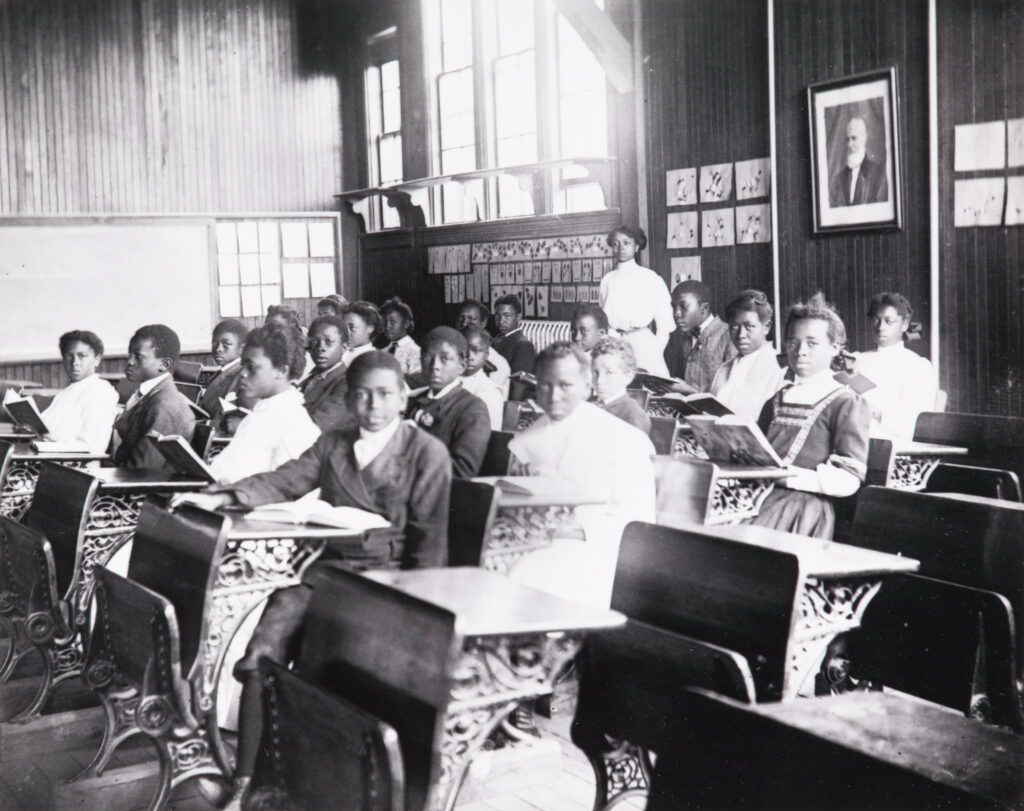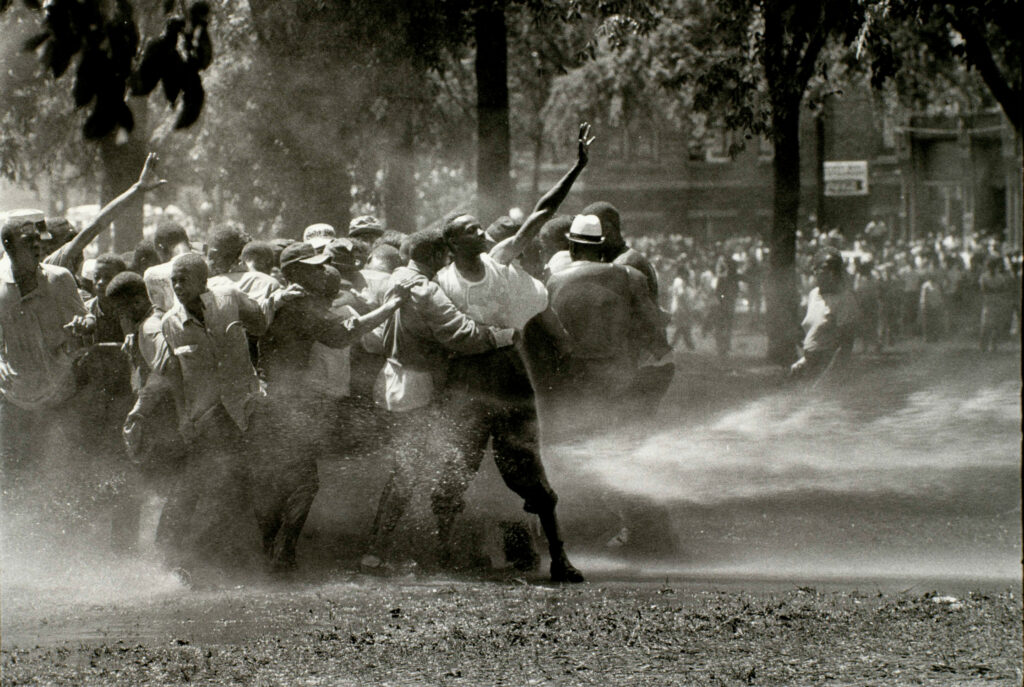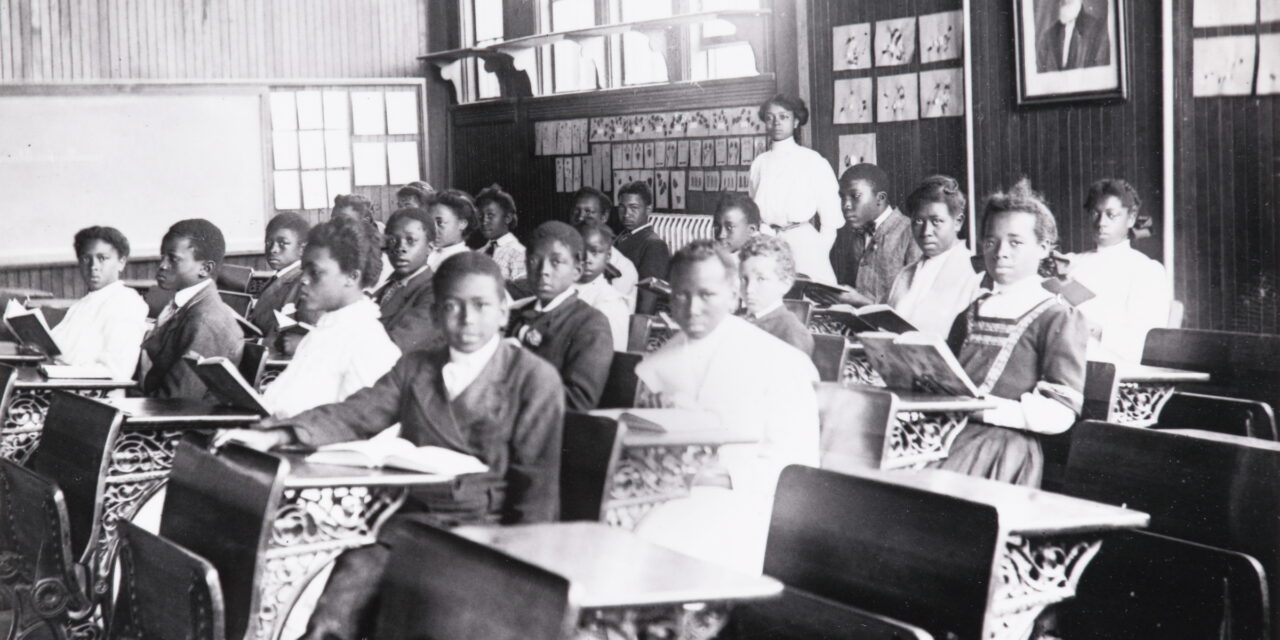Content Warning: This article contains references to racial violence.
A gash in a tree trunk; a ghost in an antebellum mansion. The High Museum of Art’s new photography exhibit portrays the South in its rawest, bloodiest form.
“A Long Arc: Photography and the American South since 1845” shields viewers from nothing, presenting the South as a chilling microcosm of U.S. culture. The region’s history of violence, disenfranchisement and political strife are not censored in the exhibit, which opened at the High Museum of Art on Sept. 15.
The unsettling photographs of a mythologized region show how Southern photography has shaped “race, place, and history” in the United States, according to the exhibition’s introductory blurb. Museum-goers interested in understanding the complicated history of the American South and the impact of the deep wounds left by slavery and the Jim Crow era cannot miss the exhibit, for it educates visitors on Southern history from the Civil War onward while exposing them to the unflinching gaze of the camera.

(James Van Der Zee (American, 1886–1983), Whittier Preparatory School, Phoebus, Va., 1907, printed later, gelatin silver print, High Museum of Art, Atlanta, purchase, 74.143 B. © James Van Der Zee Archive, The Metropolitan Museum of Art.)
“A Long Arc: Photography and the American South since 1845” begins with the Antebellum South and the Civil War. Photographs by George N. Barnard are especially striking, as his images captured dystopian scenes from destroyed Southern cities. In the 1864 painting “Rebel Works in Front of Atlanta, Georgia, No. 1,” Barnard photographs Atlanta in the wake of Sherman’s March to the Sea, as the Union Army burned down nearly everything between Atlanta and Savannah (Ga.). The city is frightening and desolate, with only a few buildings visible between crumpled fences, broken railroad tracks and half-burnt trees.
This image also contrasts with an earlier one displayed in the exhibition, a print by McPherson & Oliver titled “Peter,” which features an enslaved person with raised whipping scars on his back. The photograph is a living artifact of 19th-century outrage toward slavery, showing the horrors of the institution without any sort of censorship. Both images tell a story of the Antebellum South as a place of destruction and protest, loss and pain.
“A Long Arc: Photography and the American South since 1845” also offers an in-depth investigation into the rise of photography as a form of documentary. According to the exhibition guide, the South became the nation’s most-documented region by the ’30s when photographers viewed it as the epicenter of bigotry and oppression and saw photography as a tool for social reform. From Walker Evans’ famous photo of a sharecropper’s wife in Alabama to represent the struggles of the Great Depression to Marion Post Wolcott’s haunting image of an African American man using the “colored” entrance to a theater to spread word of the horrors of the Jim Crow South, the exhibition evidences the important role photography played in bringing news of the South to more progressive regions of the country in hopes of catalyzing social change.
The exhibition also follows the rise of Southern Gothic as an aesthetic, with Clarence John Laughlin capturing an image of a seemingly-ghostly apparition on the second floor of a stately Southern house. This aesthetic carries throughout the exhibition and endures today, with movies like “The Devil All the Time” (2020) and musicians like Ethel Cain tapping into the spooky, grotesque imagery that so often surrounds the South. Think lonesome wooden crosses, abandoned farmhouses and corrupt pastors, contrasted with lush forests and chirping cicadas. This depiction of the South was a response to Mark Twain’s romanticized view of the region — photographers like Laughlin and authors like Harper Lee and William Faulkner pioneered this imagery. However, “A Long Arc: Photography and the American South since 1845” illustrates the origin of the wounds that tore through the South and fed into the depiction of the region as an uncanny, unfriendly place of pain and bloodshed.
More recent wounds are equally represented in the exhibit, with the High Museum of Art showcasing photography from the Civil Rights Movement. Highlights include photographs of Rosa Parks being fingerprinted by Deputy Sheriff D.H. Lackley and Martin Luther King Jr.’s arrest, caught on camera by Gene Herrick and Charles Moore, respectively.

(Bob Adelman (American, 1930–2016), Kelly Ingram Park, Birmingham, Alabama, 1963, gelatin silver print, High Museum of Art, Atlanta, purchase with funds from Dr. Henrie M. Treadwell, 2007.172. © Estate of the artist.)
A particularly haunting photograph shows civil rights demonstrators and Ku Klux Klan members standing beside each other on an Atlanta sidewalk, reminding viewers that 50 years ago our city was the epicenter of racial violence and revolution. No detail of the Civil Rights Movement is neglected in the exhibition, which included tactfully-captured photos of the arrangement of Martin Luther King Jr.’s motel room after he was shot and an image of Coretta Scott King, his wife, on her front lawn in Atlanta. The collection highlights the big moments, like the Selma (Alaska) to Montgomery (Ala.) March, but refuses to neglect the quieter ones that are equally indicative of the era.
Later photography followed the South as it evolved into a center of commerce and business around Atlanta. An image of a businessman is exhibited two photographs away from a haunting, hazy image by photographer Sally Mann, who begs her audience not to forget the dark history of the South in her 1998 photograph “Deep South, Untitled (Scarred Tree).” This image reminds viewers that beauty and brutality can coexist, both in a photograph and in a region.
The exhibit also displays other contemporary photographs of abandoned plantations, antebellum architecture and nature as humans and climate change influenced it. In the most modern section, images dive into Southern femininity, the growing acceptance of interracial relationships in the Deep South and the emergence of a thriving LGBTQIA+ culture.
“A Long Arc: Photography and the American South since 1845” succeeds in surveying the South in its most complete form: not as a place that is “backward,” but as a place that has forever been the epicenter of contention and change. Documentary photography thrives in the South because the region has always been ground zero of the social disorder reverberating throughout the nation, a place that seems lost in the past. Modern photographers honor the region’s complicated legacy by accenting even the most idyllic, beautiful scenes with a nod to its brutalistic history. The South is not the South without acknowledgment of the bloodshed on its soil, and the High Museum of Art understands that history.
If you or someone you know experienced racial violence, you can call the Emory Police Department at (404) 727-6111 or reach Emory’s Counseling and Psychological Services at https://counseling.emory.edu/. You can reach the Atlanta Police Department at (404) 614-6544 and the Lines for Life Racial Equity Support Line from 1 p.m. to 10 p.m. Eastern Daylight Time at (503) 575-3764.
Sophia Peyser (25C) is an environmental science and english + creative writing major from New York City. In addition to managing the Opinion and Editorial Board sections of the Wheel, she works as an intern at Science for Georgia and a radio DJ at WMRE. In her free time, she loves thrifting in remote corners of Atlanta and drinking lavender lattes at Victory Calamity + Coffee.







